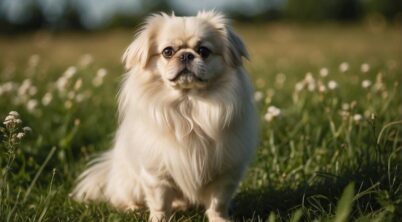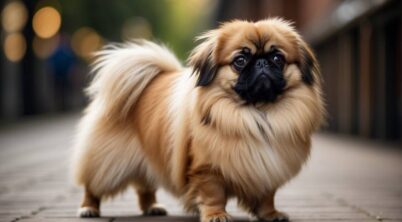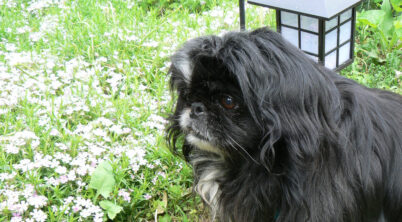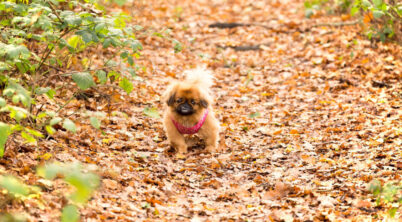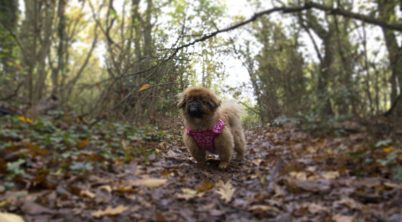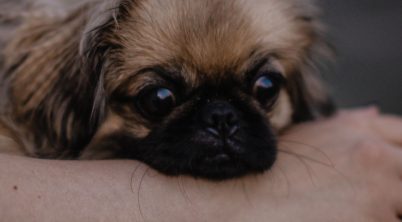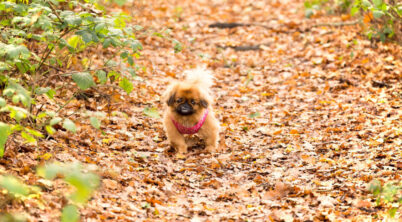The Pekingese, often referred to as the “lion dog” for its resemblance to Chinese guardian lions, is a toy breed with a distinct regal bearing. Originating from the imperial courts of ancient China, this breed is enveloped in a long, flowing double coat that requires regular maintenance. Shedding is an integral aspect of the Pekingese’s coat health, as it naturally allows for the renewal of hair and maintenance of its luxurious mane.
Shedding in Pekingese is not just a seasonal affair but occurs throughout the year, with variations in intensity that can be influenced by factors such as climate and the individual dog’s health and genetics. While they might be small in size, these dogs shed a notable amount, often compared to larger, more profusely shedding breeds. This characteristic necessitates a commitment to grooming that prospective owners should consider before bringing one of these canine companions into their home.
Despite its high shedding level, the Pekingese continues to be cherished for its loyalty and spirited personality. This breed’s enduring charm is a testament to its storied history and the esteemed place it once held—and for many, continues to hold—in the hearts of dog lovers. Owners and admirers alike accept the grooming responsibilities that come with the breed, viewing them as a small price to pay for the joy of sharing their lives with these dignified and affectionate companions.
Table of Contents
Pekingese Shedding Level
The Pekingese breed is characterized by its luxurious double coat, which contributes to a higher-than-average shedding level. Seasonality is a significant factor, with shedding often increasing during warmer periods as the dog naturally adapts to the climate.
Shedding Intensity:
- Moderate to Heavy: Individual Pekingese may vary, but they generally shed more than light shedders like Maltese or Shih Tzu.
- Seasonal Factors: Expect more shedding during temperature changes, particularly from winter to spring.
Grooming Requirements:
- Daily Brushing: Essential for managing shedding and preventing tangles.
- Professional Grooming: Recommended periodically to maintain coat health.
Factors Influencing Shedding:
- Health and Diet: Proper nutrition and good health can mitigate shedding.
- Stress Levels: Increased shedding can be a sign of distress.
- Hormonal Changes: Fluctuations can affect the shedding cycles.
Dog owners can expect to invest time in regular grooming and may need to adapt their home environment, such as using covers on furniture and regular vacuuming, to manage the Pekingese’s shedding.
Pekingese Breed Overview
The Pekingese, also referred to as “lion dogs,” is a breed steeped in rich history hailing from China. Serving as companions to Chinese royalty, these dogs have long been valued for their affectionate and intelligent nature.
Appearance The breed is distinct with a lion-like mane of long hair, contributing to a dignified and somewhat regal overall appearance. Its body is stocky and well-muscled, showing strength despite its small stature. Height usually ranges from 6 to 9 inches at the shoulder, with weights fluctuating between 7 to 14 pounds.
Temperament Pekingese are known for their confidence and self-importance, greatly influenced by their ancestral royal connections. They are affectionate towards their families and can be quite protective.
Historical Significance Legends tie the Pekingese to the Buddhist concept of the lion—an animal not endemic to ancient China but revered in Buddhist mythology. According to legend, Buddha reduced a lion to the size of a small dog, resulting in the breed now known as the Pekingese.
Grooming The breed’s prominent mane and overall coat require consistent grooming to prevent matting and to manage shedding. While they are moderate shedders, their grooming regime is quite intensive compared to other breeds.
In sum, the Pekingese is a breed of ancient lineage, renown for its unique look reminiscent of Chinese guardian lions and an unwavering, loving temperament that has been preserved since its time with the emperors and empresses of China.
Understanding Pekingese Shedding
The Pekingese breed is known for its considerable shedding due to its double coat, which includes a long, straight outer coat and a thick undercoat. Shedding in Pekingese is influenced by their natural cycle and various environmental and health factors.
Shedding Cycle
The Pekingese has a distinctive shedding cycle that correlates with seasonal changes. Seasonal shedding occurs mainly during spring and fall when they prepare their coat for the coming temperature shifts. During these periods, Pekingese will lose their thick undercoat more profusely than at other times of the year. Owners should expect and prepare for a higher volume of hair around their homes during these shedding seasons.
Factors Affecting Shedding
Several factors can influence the shedding rate of a Pekingese:
- Hormonal imbalances: These can lead to irregular shedding patterns.
- Nutrition: Poor nutrition may increase shedding due to a lack of essential nutrients for coat health.
- Health issues: Parasites, allergies, or skin diseases can exacerbate shedding.
- Environmental factors: Stressful environments or lack of routine grooming can elevate shedding levels.
Regular grooming and brushing at least 2–3 times a week can greatly reduce the shedding and keep the coat healthy. Owners should also ensure that their Pekingese has a balanced diet and a stress-free environment to help maintain normal shedding levels.
Grooming Requirements
Pekingese dogs need an attentive grooming routine, specifically to prevent tangles and mats due to their long, flowing coats.
Brushing and Combing
Regular grooming and brushing are key to maintaining the Pekingese’s coat. A slicker brush works effectively to gently remove loose fur and help manage shedding. It is recommended that owners use a metal comb to carefully detangle any mats that form, especially in the dense undercoat. They should brush their Pekingese multiple times a week, and during shedding seasons, daily brushing may be required to keep shedding under control.
Bathing Practices
When it comes to bathing, a Pekingese should generally be washed every 4 to 6 weeks. Bathing too frequently can strip their coat of natural oils, leading to dry skin. Owners should use a dog-specific shampoo and ensure to thoroughly rinse out any product to prevent irritation. Post-bathing, it’s important to completely dry their coat to avoid any potential for matting.
Professional Grooming
Some owners may choose to rely on a professional groomer for their Pekingese’s grooming needs. Specifically, for detailed trimmings such as around the paw pads and sanitary areas. Regular appointments with a groomer can also help in managing shedding and ensuring the coat stays free of tangles and mats. Many professional groomers have access to specialized deshedding tools and are skilled in their use, which can significantly reduce the amount of hair shed around the home.
Managing and Reducing Shedding
To effectively manage and reduce a Pekingese’s shedding, owners should focus on a nutritional diet, establish a thorough grooming routine, and maintain a clean living environment for their pet.
Diet and Supplements
A Pekingese’s diet plays a critical role in the health of its coat and can significantly affect shedding. High-quality dog food rich in essential nutrients is paramount. It should contain a balance of Omega-3 and Omega-6 fatty acids, which promote a healthy, shiny coat and can be found in ingredients like fish oil or flaxseed oil. Supplements containing these fatty acids may also be beneficial if they are not sufficiently present in the dog’s regular diet.
Daily Brushing Routine
A consistent daily brushing routine is essential to minimize shedding. Using an appropriate brush for the Pekingese’s double coat can help remove loose fur and prevent mats. Brushing daily keeps the coat clean, reduces the amount of hair that ends up on furniture, and distributes the dog’s natural skin oils, contributing to coat health. Integrating a quality dog shampoo into the grooming routine during baths can also help keep the skin and hair follicles strong, further reducing excessive shedding.
Home Cleaning Tips
Maintaining a clean home is an integral part of managing shedding. Regular vacuuming of floors and furniture can quickly clear up loose fur. It’s helpful to groom the Pekingese in a designated area to contain the hair. Owners may also use furniture covers or throws to protect upholstery and make cleaning up easier. Keeping the Pekingese’s living space free of dirt and debris can discourage excessive scratching, which may in turn reduce shedding.
Health and Shedding Correlation
Shedding in Pekingese can often be a reflection of their overall health, with certain health issues leading to increased hair loss. Proper understanding and management of these conditions are essential in maintaining the coat’s natural cycle without excessive shedding.
Common Health Issues
The Pekingese breed is prone to several health issues that can affect their coat. Skin infections and allergies—including those triggered by certain foods or environmental allergens—can lead to excessive shedding. Hypothyroidism, a condition where the thyroid gland is less active, can also manifest in a deteriorated coat quality, causing hair loss. Routine checks for skin conditions and proper management of the dog’s diet to avoid food allergies play a significant role in maintaining a healthy fur state.
- Health Issues Leading to Excessive Shedding:
- Skin infections
- Environmental allergies
- Food allergies
- Hypothyroidism
Impact of Stress and Anxiety
Pekingese may exhibit increased shedding in response to stress or anxiety. Psychological stress can trigger a host of physiological responses, and one of them is the disruption of the natural hair growth cycle. Identifying and reducing stressors can help mitigate such effects. Ensuring a calm environment and providing regular, comforting routines are some measures that can be taken to minimize stress-related shedding.
- Factors That Can Cause Stress-Induced Shedding:
- Changes in environment
- Separation anxiety
- Overstimulation
Through diligent observation and care, one can address the health-related causes of shedding specific to Pekingese, ensuring the wellbeing of both the dog and the quality of their coat.
Pekingese Behavior and Temperament
The Pekingese is known for its courageous and affectionate nature, often seen as a confident lapdog. These dogs exhibit a dignified and independent behavior, which can occasionally be misinterpreted as stubbornness. When it comes to training, they respond best to positive reinforcement techniques, including treats and praise, and may require a patient approach due to their independent streak.
While they make excellent companions, Pekingese can develop separation anxiety if left alone for extended periods. Ensuring they are part of family activities can mitigate this. Their behavior as a watchdog is notable; they are alert and might be suspicious of strangers, which could lead to aggressive tendencies if not properly socialized.
Here are some key points about their behavior:
- Lapdog Tendencies: Pekingese often prefer to be close to their owners, happy to sit on a lap for long periods.
- Socialization: They require early socialization to avoid potential aggression.
- Training Challenges: Independent nature may challenge training; however, consistency and positive methods work well.
- Watchdog Ability: They are naturally vigilant and can be effective at alerting their owners to unfamiliar sounds or visitors.
In households, they generally exhibit loyalty and a pleasant demeanor, although their behavior can lean towards protective. They are less inclined to be overly playful but enjoy attention and interaction. With proper guidance and consistency, the Pekingese can become well-behaved and a cherished member of the family.
Frequently Asked Questions
Do Pekingese shed a lot?
Yes, they do. The Pekingese is a shedding breed with a double coat consisting of a long, straight outer coat and a soft, thick undercoat. They shed continuously throughout the year with seasonal peaks, usually during spring and fall.
How can one manage a Pekingese’s shedding?
Regular and thorough grooming practices are required to manage shedding. Brushing their coat several times a week helps to remove loose hair and prevent mats and tangles. During periods of heavier shedding, daily brushing may become necessary.
What are some recommended grooming tools?
A slicker brush, dematting tool, and a fine-toothed comb are beneficial. These tools help to efficiently remove loose fur and keep the Pekingese’s coat in good condition.
Can grooming affect the color or compactness of the coat?
Grooming maintains the coat’s cleanliness and luster but does not affect its color. Regular grooming keeps the coat compact by removing excess fur, which can give the appearance of a sleeker coat.
Are Pekingese hypoallergenic?
No, they are not considered hypoallergenic. Due to their shedding and dander production, they may trigger allergic reactions in sensitive individuals. It’s important to spend time with the breed before deciding to own one if allergies are a concern.
What strategies help to reduce the impact of shedding on allergies?
Creating a clean environment by vacuuming regularly and using air purifiers can reduce allergens. Bathing the dog with a mild shampoo can also help to minimize the amount of dander and loose hair in the home.
Is there a difference in shedding due to coat color?
No, the color of a Pekingese’s coat does not influence the shedding level. All colors of Pekingese shed comparably.

